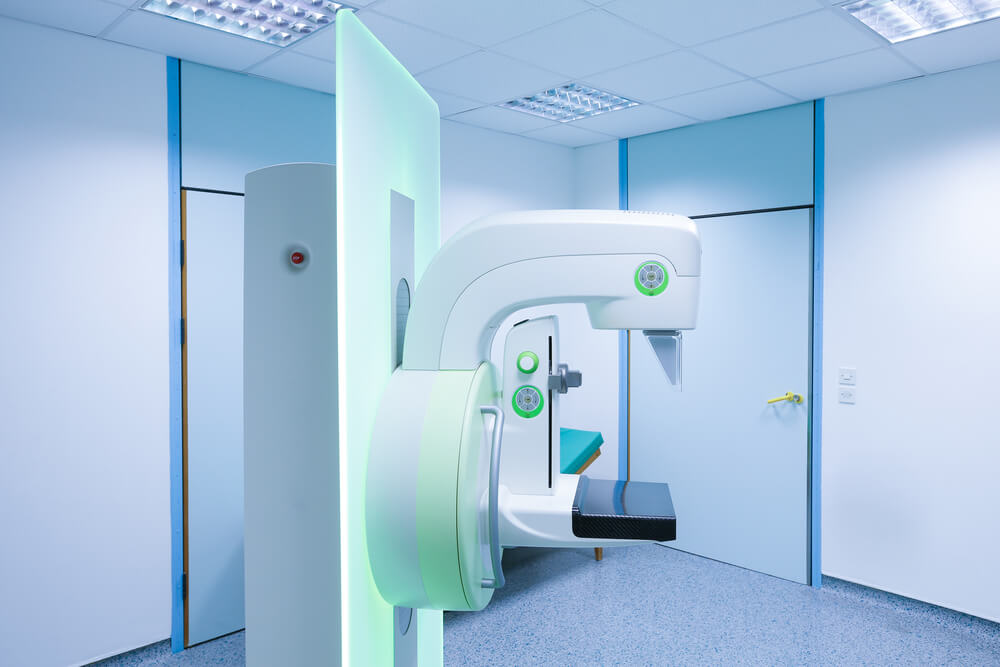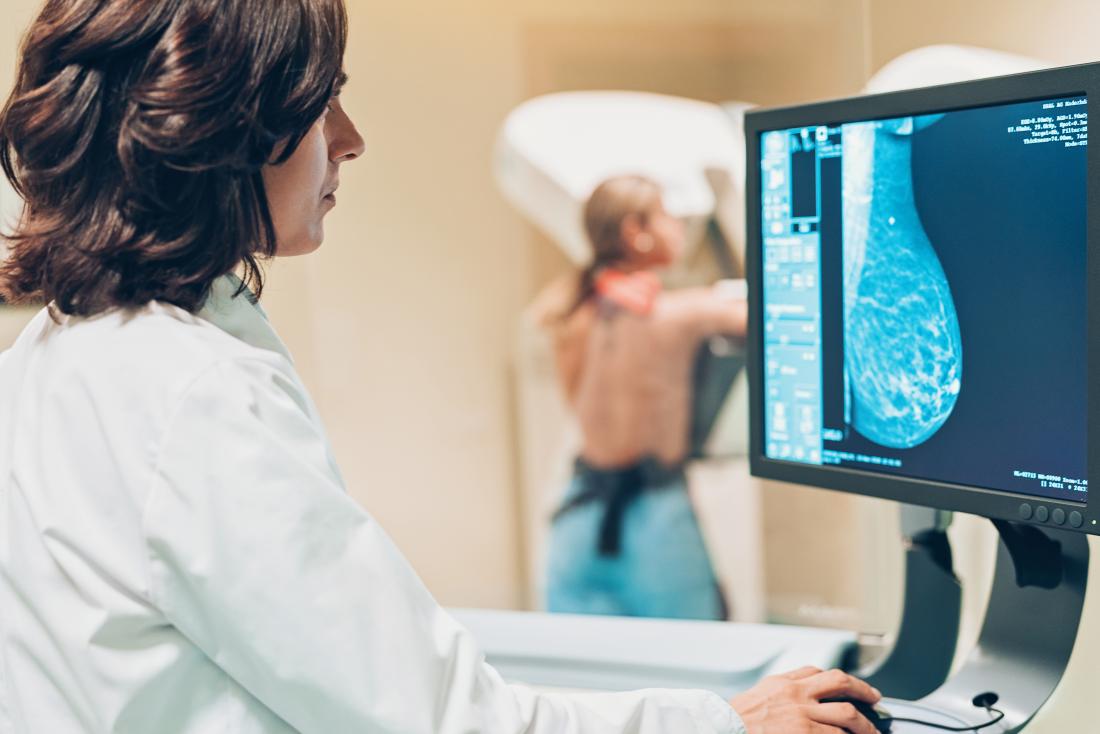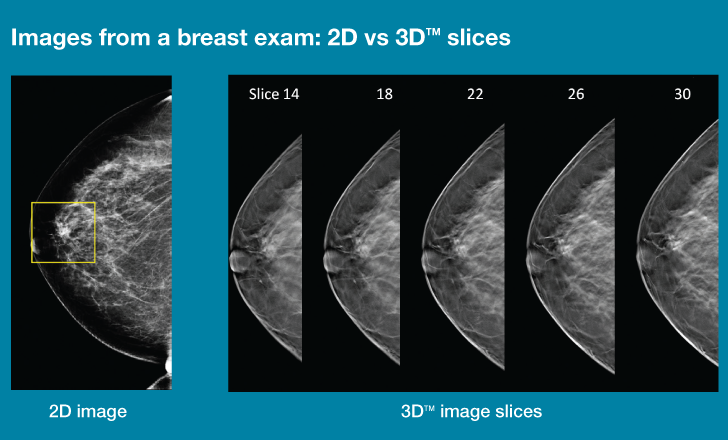Just like a three-dimensional photo is more detailed and lifelike than a 2D image, digital breast tomosynthesis (DBT)—or 3D mammography—gives radiologists a clearer view of breast tissue. And that's why this new technology has rapidly become an essential imaging tool that enhances a doctor's ability to detect early breast cancer. With breast cancer, earlier detection leads to earlier treatment, less aggressive treatment options, and better outcomes.
Thanks to 3D mammography, radiologists can view breast images in "slices," which essentially allows them to see straight through tissue layers and makes it less likely they’ll miss an early sign of cancer. Unlike 2D mammograms, the 3D technology also makes it easier for radiologists to detect breast cancer that is masked by overlapping fibroglandular tissue. Research shows 3D mammography is up to 40 percent better at detecting invasive breast cancers.

“DBT or 3D mammography is more accurate than conventional 2D mammography,” says radiologists. “It improves interpretation of mammograms and will likely entirely replace conventional 2D mammograms in the future.”
There are many benefits of 3D mammograms. Here are some specifics you should know about :

The experience of having a 3D mammogram feels the same as having a 2D one. You arrive at the breast center and change into a dressing gown. A radiology technician escorts you into a private mammography room with the 3D mammography machine. (It looks the same as a conventional 2D mammography machine.)
The technician helps you know how to position your body. The breast is supported by a tray while a flexible plastic plate is gently lowered down on top of the breast to press against the breast tissues.
A mammography tube then takes a series of low-radiation dose X-ray images at different angles, all within just a few seconds. The process is repeated for the other breast. The radiologist reads the images and sends a complete report to you and your doctor with the results.
The entire exam is quick (about 15 minutes). The good news for patients is it doesn't take any more time to have her mammogram than usual. Each image only takes a few seconds.

Talk to your health care provider about when you should begin having screening mammograms. Average risk women (including women with dense breasts) should consider starting yearly screening mammography beginning at age 40.
A mammogram is a low-dose x-ray of the breasts. Mammogram screening can detect breast cancer up to three years before a tumor can be felt during a breast exam. Without a cure for breast cancer, early detection is the very best defense.
When it comes to scheduling your mammogram, you will have the choice between 3D and 2D mammography. What’s the difference?

The positioning for a 3D mammogram is the same as a 2D mammogram. But instead of taking a single picture, the unit moves in an arc around the breast and takes multiple snapshots. Then, computer software takes all of those snapshots and combines them for a more complete picture. “It uses the same amount of radiation, in the same amount of time, but with much greater detail and information.
“When you take a traditional mammogram, you are taking a picture of a 3D object and producing a 2D representation,” Dr. Priyanka said. “As a result, you have structures that sit on top of each other and mimic a mass.” With 3D, the doctor can go in and view each “slice” of the breast to determine if it is a mass. “Ultimately it means that our ability to pick up small cancers is improved, and we have fewer false positives,” explained Dr. Priyanka.
Medical Imaging is proud to provide the community with the latest technology and the highest level of patient care for the greatest value in the region.
Ultimately, 3D mammography is the next step in improving patient care. According to Dr. Priyanka, “3D is a tool. It’s the next step in our ability to detect these cancers when they’re smaller. It’s the future of breast imaging.”
Schedule your annual Mammogram. Do it for you. Do it for those who love you
